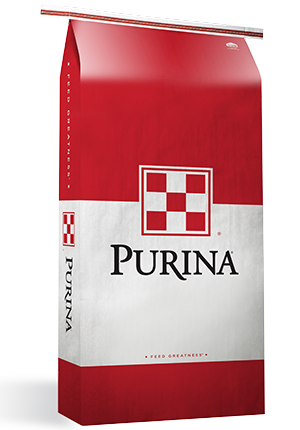
Tips to Boost Goat Parasite Control
Wellness : Nutrition
Wellness : Health

There’s no question internal and external parasites bug your goats. Pun intended.
An effective parasite control program can go a long way to rid your herd of the discomfort and wasted energy caused by these pests. When goats don’t have to worry about annoying flies and worms, energy can be diverted to more important areas, such as reproductive efficiency, weight gain and health.
When pest pressure increases, the stakes get higher. Use these three recommendations to knock out parasites, boost animal productivity and benefit herd profitability:
These pests are of greatest concern from around March through October in southern states. Fly season in northern states depends on how soon temperatures warm in the spring and when killing frosts occur in the fall.
Insecticide sprays, fly tags and dusters offer fly control options. Be sure to watch and rotate chemical classes when possible to prevent resistance issues and use according to product labels.
Adult female worms produce eggs that are passed in manure. Larvae hatch and go through several stages of development before they can infect the next host. During the warm months of the year, enormous numbers of larvae can build up in your pasture.1
Consider these management actions to reduce barber pole worm challenges:
Also, use the FAMACHA system which compares a color chart to the inner lower-eye membrane of each goat to evaluate pathogen presence and target treatments. For example, a white color indicates anemia from a high parasite load.
Work with your veterinarian to determine a comprehensive treatment plan to maximize worm control effectiveness.
Adequate dietary protein and minerals, as well as energy and other nutrients, are important when dealing with the effects of parasites. Nutrition gives animals the energy needed to address any disease challenges and support overall health.
Consider sheep minerals, like Purina® Sheep Mineral with ClariFly®, as a way to support your herd when dealing with parasites. Most sheep minerals don’t have the adequate amount of copper needed for goats, so supplemental copper may be needed.
Also, monitoring herd body condition score can help determine if parasite loads are a problem. If you know animals are receiving proper nutrition, but you notice goat body condition declines or does and kids aren’t as thrifty as they should be, consider parasites as a culprit and take corrective action.
Contact your local Purina nutritionist to learn more about parasite control for your herd.
Does your goat nutrition program stack up? Find out with a Proof Pays trial.
An effective parasite control program can go a long way to rid your herd of the discomfort and wasted energy caused by these pests. When goats don’t have to worry about annoying flies and worms, energy can be diverted to more important areas, such as reproductive efficiency, weight gain and health.
When pest pressure increases, the stakes get higher. Use these three recommendations to knock out parasites, boost animal productivity and benefit herd profitability:
1. Give flies the buzz-off
No matter where you’re located, house flies and stable flies are a biting threat to goats. Flies usually attack ears, noses, bellies, legs and open wounds or sores, and are known to carry and spread diseases.These pests are of greatest concern from around March through October in southern states. Fly season in northern states depends on how soon temperatures warm in the spring and when killing frosts occur in the fall.
Insecticide sprays, fly tags and dusters offer fly control options. Be sure to watch and rotate chemical classes when possible to prevent resistance issues and use according to product labels.
2. Banish barber pole worms
Although goats are subject to many types of parasites, Haemonchus contortus, or barber pole worm, is considered the most significant nematode parasite. This bloodsucking pest leaves animals weak, and even incapacitated – reducing weight gain, stressing general health and lowering reproductive performance.Adult female worms produce eggs that are passed in manure. Larvae hatch and go through several stages of development before they can infect the next host. During the warm months of the year, enormous numbers of larvae can build up in your pasture.1
Consider these management actions to reduce barber pole worm challenges:
- Rotate pastures. The longer you can rest native pastures, the better.
- Rotate dewormer products annually and follow label directions to minimize resistance issues.
- Work with your veterinarian to use fecal egg counts to determine treatment effectiveness.
Also, use the FAMACHA system which compares a color chart to the inner lower-eye membrane of each goat to evaluate pathogen presence and target treatments. For example, a white color indicates anemia from a high parasite load.
Work with your veterinarian to determine a comprehensive treatment plan to maximize worm control effectiveness.
3. Use nutrition to support goat resilience
Animals on a high nutritional plane are equipped to address the adverse effects of parasites.Adequate dietary protein and minerals, as well as energy and other nutrients, are important when dealing with the effects of parasites. Nutrition gives animals the energy needed to address any disease challenges and support overall health.
Consider sheep minerals, like Purina® Sheep Mineral with ClariFly®, as a way to support your herd when dealing with parasites. Most sheep minerals don’t have the adequate amount of copper needed for goats, so supplemental copper may be needed.
Also, monitoring herd body condition score can help determine if parasite loads are a problem. If you know animals are receiving proper nutrition, but you notice goat body condition declines or does and kids aren’t as thrifty as they should be, consider parasites as a culprit and take corrective action.
Contact your local Purina nutritionist to learn more about parasite control for your herd.
Does your goat nutrition program stack up? Find out with a Proof Pays trial.
1University of Arkansas Cooperative Extension. Parasites in Small Ruminants. Available at: https://www.uaex.edu/farm-ranch/animals-forages/sheep-goats/internal-parasite-control.aspx.



